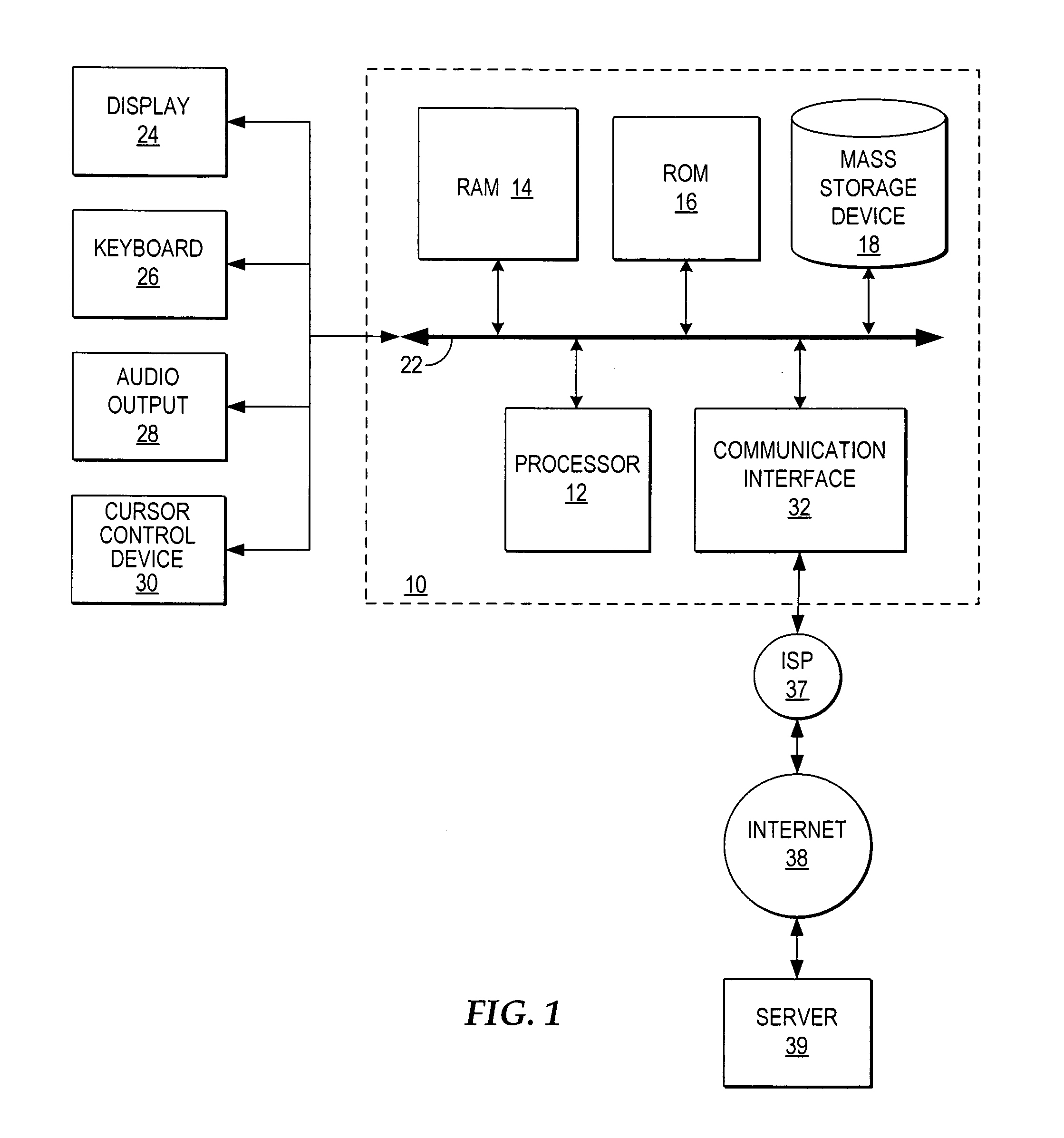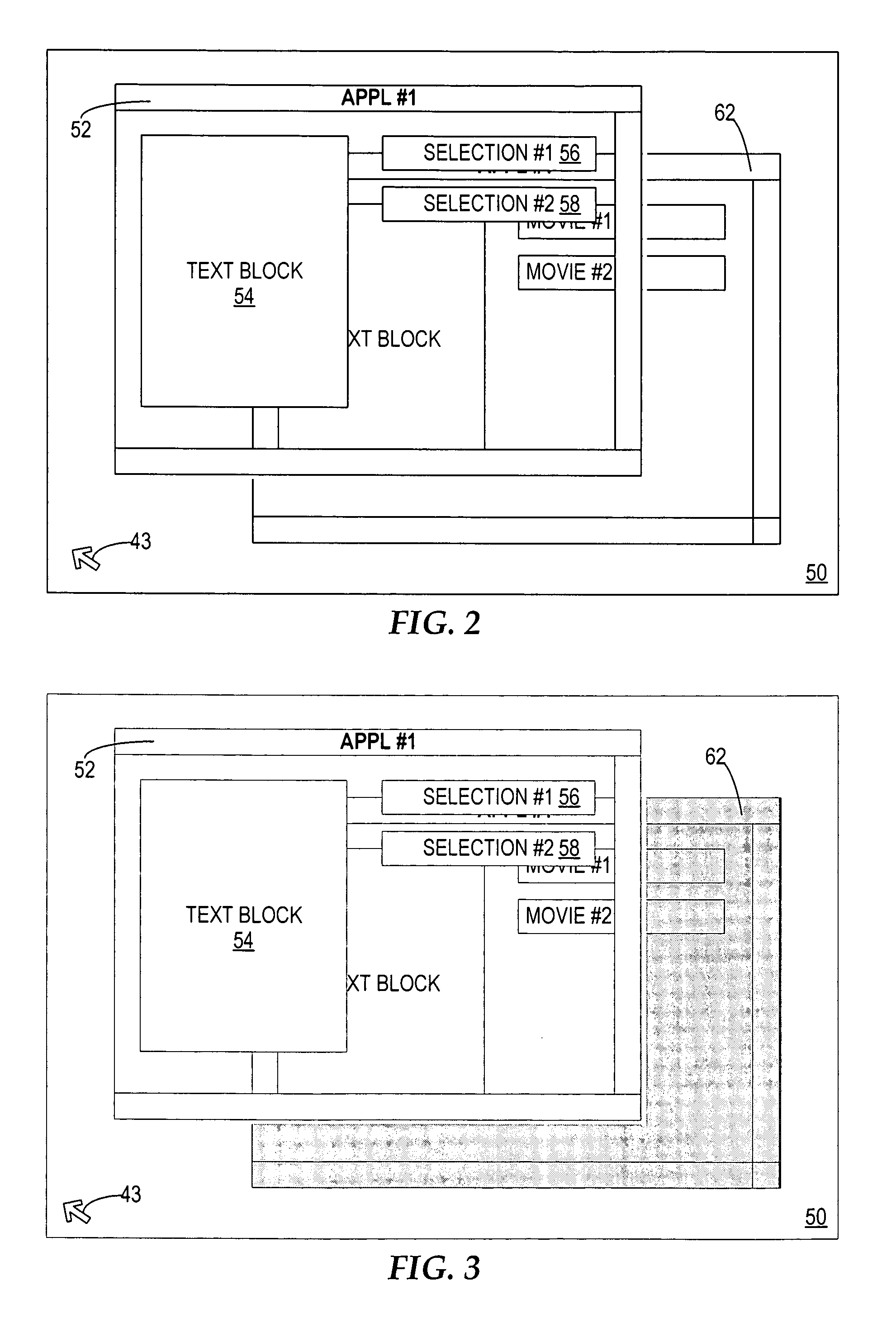Changing the alpha levels of an application window to indicate a status of a computing task
a technology of computing task and application window, applied in computing, instruments, electric digital data processing, etc., can solve the problem of limiting the total amount of screen space, and achieve the effect of less transparency and more transparency of displayable objects associated with installation programs
- Summary
- Abstract
- Description
- Claims
- Application Information
AI Technical Summary
Benefits of technology
Problems solved by technology
Method used
Image
Examples
Embodiment Construction
[0037]A method, system, and program for changing the alpha levels of an application window to indicate a status of a computing task are provided. In addition to application windows, the transparency of other displayable objects may be adjusted without effecting the z-order of those displayable objects. A “displayable object” may include text, icons, video, graphics, windows, or other logical graphical representations displayable within a display area. Displayable objects may be hidden or visible. Further, displayable objects may be layered in a z-order. Moreover, a displayable object may utilize a portion of a display area or may extend across the entirety of a display area. A displayable object may or may not include definable boundaries.
[0038]A z-order is the order along the z-axis in which displayable objects appear. Through a z-buffering technique, a depth is associated with each displayable object such that each object appears to be set at a particular depth in comparison with ...
PUM
 Login to View More
Login to View More Abstract
Description
Claims
Application Information
 Login to View More
Login to View More - R&D
- Intellectual Property
- Life Sciences
- Materials
- Tech Scout
- Unparalleled Data Quality
- Higher Quality Content
- 60% Fewer Hallucinations
Browse by: Latest US Patents, China's latest patents, Technical Efficacy Thesaurus, Application Domain, Technology Topic, Popular Technical Reports.
© 2025 PatSnap. All rights reserved.Legal|Privacy policy|Modern Slavery Act Transparency Statement|Sitemap|About US| Contact US: help@patsnap.com



